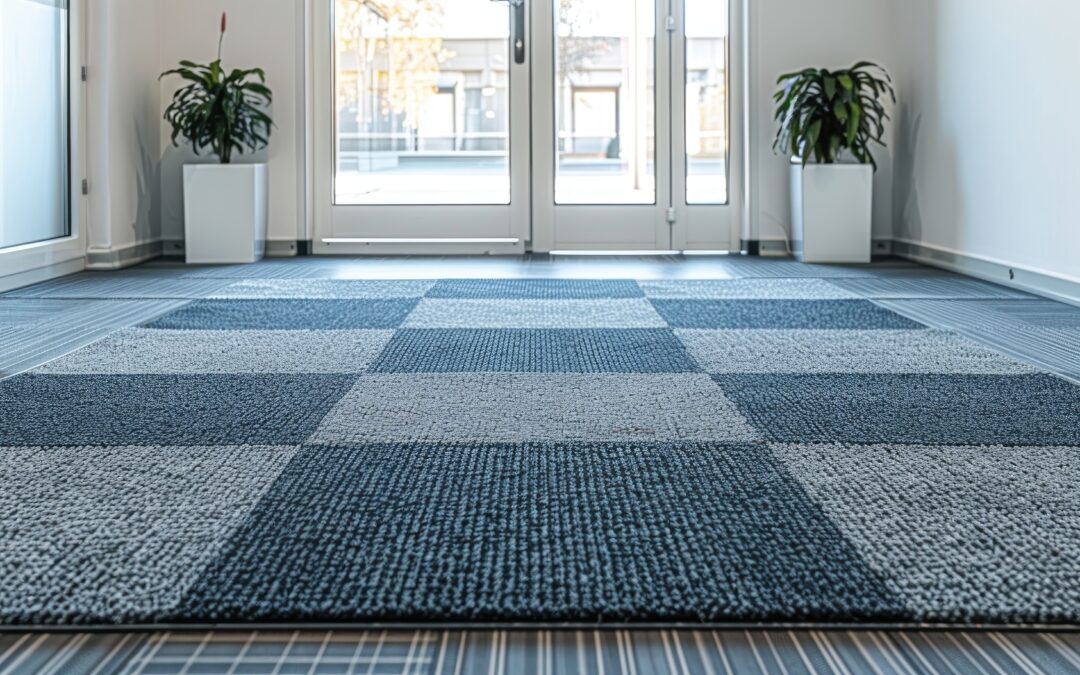Carpet tiles, also known as modular carpets, are a popular and versatile flooring option that consists of squares of carpet material. If you’re considering carpet tiles for your next flooring project, understanding their benefits and installation process is essential.
What are Carpet Tiles?
Carpet tiles are precisely what their name suggests: square pieces of carpet that can be laid individually to cover a floor. Unlike traditional carpet rolls, which require precise cutting and stretching, carpet tiles are pre-cut into manageable sizes, typically 18 by 18 inches or 24 by 24 inches. Carpet tiles come in various colours, textures, and patterns, allowing you to mix and match to create unique designs tailored to your space.
Benefits of Carpet Tiles
Ease of Installation
One of the primary advantages of carpet tiles is their easy installation process. Unlike traditional carpet rolls that require professional installation, homeowners or business owners can often install carpet tiles, making them a cost-effective option. The individual tiles are lightweight and easy to handle.
Design Flexibility
Carpet tiles offer endless design possibilities. You can create custom patterns by mixing different colours and textures or even lay them in unique configurations such as herringbone or checkerboard patterns. This flexibility allows for a high degree of personalization, making it easy to match the carpet with your existing décor.
Durability and Maintenance
Carpet tiles are known for their durability. They are designed to withstand heavy foot traffic and are ideal for commercial spaces and busy households. Additionally, if a tile gets stained or damaged, you can easily replace it without replacing the entire carpet, which is a significant advantage over traditional carpet rolls.
Installation Process
Installing carpet tiles is a straightforward process that can be completed with a few basic tools. Here’s a step-by-step guide:
Prepare the Subfloor
Make sure the subfloor is dry, clean, and even. Remove any existing flooring materials and debris. If there is unevenness in the subfloor, level the surface with a levelling compound.
Plan Your Layout
Before you start laying the tiles, plan your layout. Measure the room and mark the center point. From this point, work outward to ensure a balanced and symmetrical design. Dry-fit the tiles to see how they will look and make any necessary adjustments.
Apply Adhesive
Depending on the type of carpet tiles you choose, you may need to apply adhesive to the subfloor. Some tiles come with a peel-and-stick backing, while others require double-sided carpet tape or a liquid adhesive.
Lay the Tiles
Start laying the tiles from the center of the room and work your way out. Press each tile firmly into place, ensuring there are no gaps between them. Use a utility knife to cut tiles to fit around the room’s edges.
Finishing Touches
Once all the tiles are in place, go over the entire floor with a roller to ensure the tiles adhere properly. Trim any excess carpet around the edges for a clean finish.
Ready to Transform Your Space with Carpet Tiles With Floor Country Canada!
Discover the versatility and ease of carpet tiles for your next flooring project. Visit Floor Country Canada to explore a wide selection of carpet tiles that suit every style and budget. Our knowledgeable team is here to help you find the perfect solution for your home or business. Contact us today to start your flooring journey!

